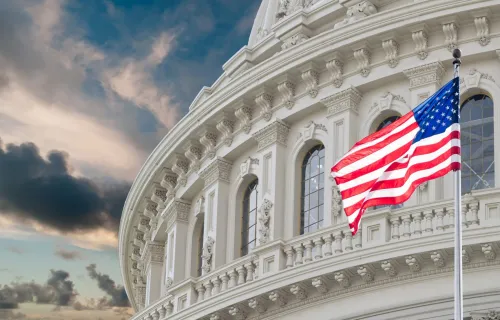Read previous entry in this series
Peter Drucker, well-known management consultant and author, coined the phrase “Culture eats strategy for breakfast.” Jim Schleckser, CEO of The CEO Project, titled an article he published, “Execution eats strategy for lunch.” While I wouldn’t put myself in their league, I’m going to suggest that “Ecosystem eats strategy for dinner.”
In our recently released CGI Voice of Our Clients 2023, surveying 1454 business and government leaders, we found that 94% of our clients had a digital transformation strategy in place unchanged from 2022. The percentage of leaders who reported seeing results from these strategies was 30%, up from 25%. That’s an improvement, but not by much.
Interestingly, we noted that 32% of digital strategies reflected ecosystem engagement. Might I offer that the latter at 32% may very well be contributing, at least to a degree, to the former at 30%?
Why ecosystem matters
A business ecosystem—and this applies to government organizations as much as commercial—is the network of organizations involved in carrying out the organization’s goals. This can be a pretty wide canvas, including suppliers, distributors, customers, other federal agencies and on and on. Within the government, “customers” encompasses U.S. citizens, foreign nationals, other federal agencies, commercial enterprises or state and local government organizations, and more.
Clearly, developing a strategy is a highly individualized undertaking. Each agency, and even each component within an agency, has its own ecosystem that may or may not share elements with others.
So let me share an example of success: IRS e-file, the electronic filing and payment of taxes (both individual and business). While it’s a long story worthy of a book, there is a very nice paper written by Dr. Stephen H. Holden, then Assistant Professor with the University of Maryland, Baltimore County, titled “A Model for Increasing Innovation Adoption: Lessons Learned from the IRS e-file Program”, which provides some background .
The IRS initiated this research project in 1985 to explore the electronic submission of individual income tax returns. By 1988, the IRS was receiving just over half a million Form 1040 returns electronically. That amounted to less than one percent of all the 1040s filed that year.
There was a lot missing from this early program. There were no national standards defining what a digital tax return or tax payment should look like. There was no alignment with the states who were researching their own independent programs. Meanwhile, taxpayers faced a fractured private sector industry of tax preparers, tax software companies and electronic filing transmitters. They encountered general resistance from professional tax preparers who would need additional equipment (the internet wasn’t yet commercialized), and had no means to make an electronic payment. Digital signing was still years in the future. There was no option for credit card payments, and there was a rise in fraud due to companies who issued loans collateralized by expected refunds.
All of these were symptoms of the lack of engagement with the ecosystem.
Reversing a backslide
By the 1990s, the rising percentage of electronically-filed returns began to backtrack, dropping from 12% to 10% between 1994 and 1995. However, by then, efforts were underway to align all the players in the ecosystem and put some order into the process.
First, in parallel with the efforts being conducted by the IRS:
- Researchers in South Carolina developed a system for filing combined state and local returns. Taxpayers could file both in a single submission to the IRS, which passed the state return on to the state’s taxing authority.
- A group of state and federal technologists working through the American National Standards Institute Accredited Standards Committee X12 Government Subcommittee and the National Automated Clearing House Association developed Electronic Data Interchange standards tax returns and a standard tax payment convention for moving tax payments.
- At the request of the IRS, industry leaders in 1994 founded a trade association to represent a coordinated voice and forum in which to work collaboratively—The Council for Electronic Revenue Communication Advancement (www.cerca.org). A more specialized one already existed—the National Association of Computerized Tax Processors (www.nactp.org).
- The Federation of Tax Administrators (www.fta.org) sponsored the establishment of TaxNet Governmental Communications Corp., a 501c3 Section 114 corporation, to offer business tax electronic filing and email services to 31 states.
Moreover, in 1998, Congress passed the IRS Restructuring and Reform Act, which led the IRS to undertake several essential initiatives. It introduced digital signing and enabled credit-card payments. It officially branded its e-filing system as IRS e-file, established a program to encourage tax preparers to offer electronic filing, and began advertising the program.
The IRS also contracted for marketing training for it electronic tax administration organization, and resurrected the IRS National Tax Forums to engage with the tax preparer community more broadly.
Finally, the IRS worked with the tax software industry to introduce free online prep and filing for various taxpayer segments, including those with adjusted gross incomes under $50,000 and veterans.
So, one of the most successful transformational programs in modern IRS history required:
- An internal cultural shift—recognizing the inevitability of electronic filing, embracing a customer centric mindset and pursuing proactive outbound collaborating.
- An external cultural shift—promoting the benefits of electronic filing, incentivizing tax preparers and fostering federal-state cooperation.
- Execution excellence from end to end, beginning with tax preparers and tax software providers to and through the IRS to the states, and
- Engaging the entire ecosystem in building out infrastructure, building easy-to-use and integrated experiences, aligning on benefits to everyone in the ecosystem, building and adopting national standards, all through collaboration and cooperation.
As such, for 2022, taxpayers electronically filed just over 213 million returns and other forms. This was 81% of all filings with 94% of individual tax income tax returns (the 1040) filed in this manner.
In the recently published Internal Revenue Service Inflation Reduction Act Strategic Operating Plan, the IRS has laid out continuing plans to grow the electronic filing of business tax returns, to significantly invest in enabling electronic and secure correspondence and communications through online accounts for individuals, businesses and their representatives (tax preparers), and identify new and additional self-service options. This same plan appreciates the importance of external stakeholder engagement and has reinforced the need for a customer-centric culture as a one of its five overarching key objectives.
For more insight in the IRS and its management and technology, read the earlier installments in this blog series.





